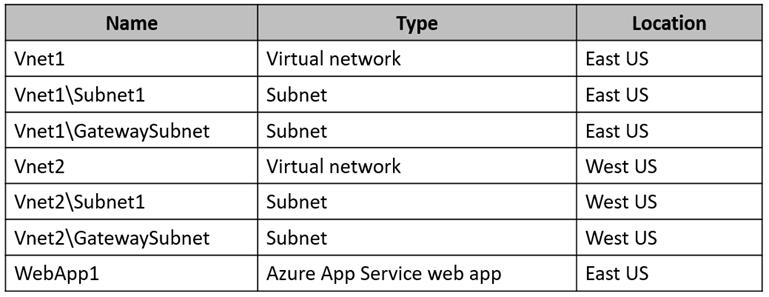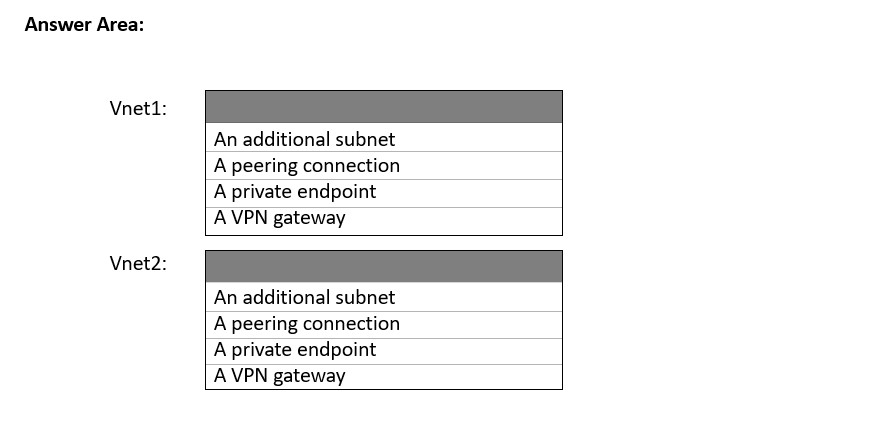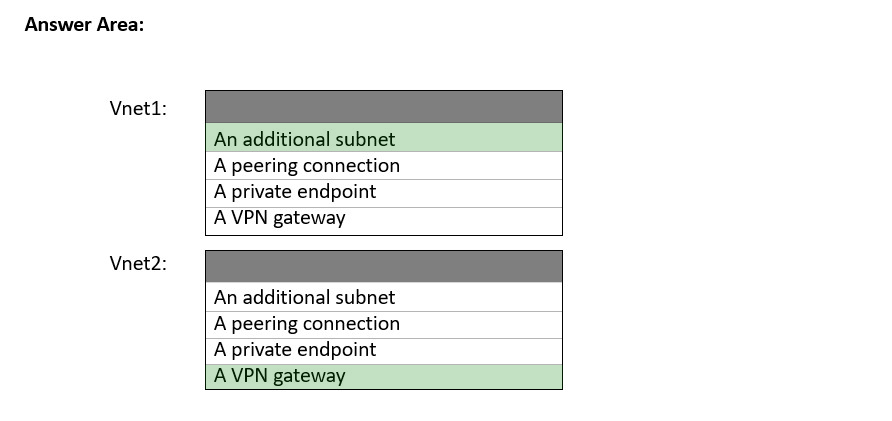

HOTSPOT -
You have the Azure resources shown in the following table.
WebApp1 uses the Standard pricing tier.
You need to ensure that WebApp1 can access the virtual machines deployed to Vnet1\Subnet1 and Vnet2\Subnet1. The solution must minimize costs.
What should you create in each virtual network? To answer, select the appropriate options in the answer area.
Hot Area:

Cristoicach91
Highly Voted 2 years, 10 months agomanhattan
7 months agomanhattan
6 months, 1 week agoFlacky_Penguin32
2 years, 7 months agosapien45
2 years, 9 months agoleaviu1
Highly Voted 2 years, 6 months agostillface
7 months, 2 weeks agowindowsmodulesinstallerworker
1 month, 1 week agoaklas
2 years, 3 months agoxRiot007
Most Recent 3 months, 2 weeks agoDGriff
1 year agoNSF2
1 year, 5 months agoAzureLearner01
2 years, 4 months agoAzureLearner01
2 years, 4 months agoSkankhunt
2 years, 5 months agoMrBlueSky
2 years, 3 months agoRajan395
2 years, 5 months agoTJ001
2 years, 5 months agoTJ001
2 years, 5 months agoDerekKey
2 years, 6 months agoTightbot
2 years, 7 months agoFlacky_Penguin32
2 years, 7 months agoFlacky_Penguin32
2 years, 7 months agoFlacky_Penguin32
2 years, 7 months agojellybiscuit
2 years, 9 months agowooyourdaddy
2 years, 4 months agowooyourdaddy
2 years, 4 months agoAanandan
2 years, 9 months agoAdityaGupta
2 years, 10 months agosapien45
2 years, 9 months ago